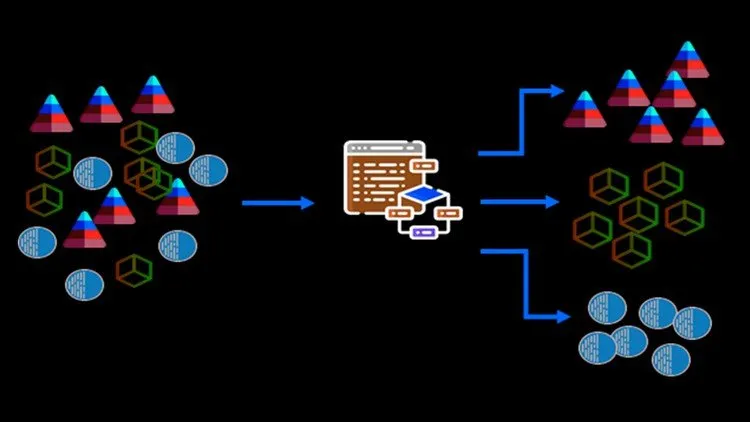Cluster Analysis : Unsupervised Machine Learning in Python
A Quick Way to Learn and Implement Clustering Algorithms for Pattern Recognition in Python. A Course for Beginners.

Cluster Analysis : Unsupervised Machine Learning in Python udemy course
A Quick Way to Learn and Implement Clustering Algorithms for Pattern Recognition in Python. A Course for Beginners.
What you'll learn:
- Understand the regular K-Means algorithm
- Understand and enumerate the disadvantages of K-Means Clustering
- Understand the soft or fuzzy K-Means Clustering algorithm
- Implement Soft K-Means Clustering in Code
- Understand Hierarchical Clustering
- Explain algorithmically how Hierarchical Agglomerative Clustering works
- Apply Scipy’s Hierarchical Clustering library to data
- Understand how to read a dendrogram
- Understand the different distance metrics used in clustering
- Understand the difference between single linkage, complete linkage, Ward linkage, and UPGMA
- Understand the Gaussian mixture model and how to use it for density estimation
- Write a GMM in Python code
- Explain when GMM is equivalent to K-Means Clustering
- Explain the expectation-maximization algorithm
- Understand how GMM overcomes some disadvantages of K-Means
- Understand the Singular Covariance problem and how to fix it
Requirements:
- Know how to code in Python and Numpy
- Install Numpy and Scipy
- Matrix arithmetic, probability
Description:
Artificial intelligence and machine learning are touching our everyday lives in more-and-more ways. There’s an endless supply of industries and applications that machine learning can make more efficient and intelligent. You have probably come across Google News, which automatically groups similar news articles under a topic. Have you ever wondered what process runs in the background to arrive at these groups? Unsupervised machine learning is the underlying method behind a large part of this. Unsupervised machine learning algorithms analyze and cluster unlabeled datasets. These algorithms discover hidden patterns or data groupings without human intervention. This course introduces you to one of the prominent modelling families of Unsupervised Machine Learning called Clustering. This course provides the learners with the foundational knowledge to use Clustering models to create insights. You will become familiar with the most successful and widely used Clustering techniques, such as:
K-Means Clustering
Hierarchical Clustering
Mean Shift Clustering
DBSCAN : Density-Based Spatial Clustering of Applications with Noise
OPTICS : Ordering points to identify the clustering structure
Spectral Clustering
You will learn how to train clustering models to cluster and use performance metrics to compare different models. By the end of this course, you will be able to build machine learning models to make clusters using your data. The complete Python programs and datasets included in the class are also available for download. This course is designed most straightforwardly to utilize your time wisely. Get ready to do more learning than your machine!
Happy Learning.
Career Growth:
Employment website Indeed has listed machine learning engineers as #1 among The Best Jobs in the U.S., citing a 344% growth rate and a median salary of $146,085 per year. Overall, computer and information technology jobs are booming, with employment projected to grow 11% from 2019 to 2029.
Who this course is for:
- Beginners starting out to the field of Machine Learning.
- Industry professionals and aspiring data scientists.
- People who want to know how to write their clustering code.
- Meteor: Build a real-time web app using only JavaScript!
- Outsource Expert: Find Great Freelancers for your Projects
- Basic English Grammar & Structures | A1-A2 Elementary Level
- JavaScript Full Course - Beginner to Expert
Course Details:
- 1 hour on-demand video
- 13 downloadable resources
- Full lifetime access
- Access on mobile and TV
- Certificate of completion
Cluster Analysis : Unsupervised Machine Learning in Python udemy free download
A Quick Way to Learn and Implement Clustering Algorithms for Pattern Recognition in Python. A Course for Beginners.
Demo Link: https://www.udemy.com/course/clusteranalysis/
